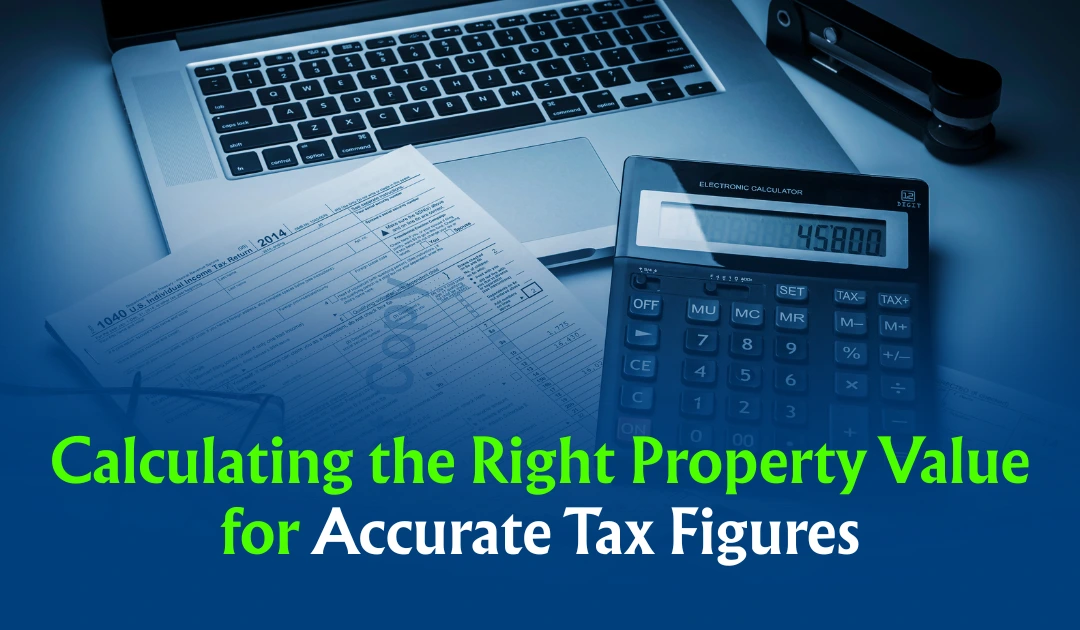Property taxation is an unavoidable aspect of real estate ownership, and it plays a crucial role in municipal revenue collection. For property owners, paying the correct amount of tax depends largely on calculating the right property value. If the value is underestimated, it could lead to penalties or disputes with authorities; if overestimated, it means paying more than necessary. Understanding how to determine the correct value is therefore essential for maintaining compliance and avoiding unnecessary expenses.
This article explores how to accurately calculate property value for tax purposes, the methods involved, and the factors that influence it, so that property owners can ensure fairness and transparency in their tax obligations.
Why Accurate Property Valuation Matters for Taxation
Property tax is generally calculated based on the assessed value of a property. The assessment serves as the foundation for determining how much you owe to local authorities. An incorrect value can cause several issues:
- Overpayment – Paying taxes on an inflated property value drains financial resources unnecessarily.
- Underpayment – Underestimating value can lead to penalties, interest charges, and legal complications.
- Disputes – Discrepancies between official assessments and actual value can result in lengthy disputes with tax authorities.
Having a precise property value ensures not only accurate taxation but also peace of mind in knowing that the payment is fair and justified.
Understanding the Basis of Property Tax Calculations
Property tax assessment methods vary across municipalities in India, but the general principle remains consistent — the tax amount is calculated as a percentage of the property value. Some cities use annual rental value, others apply capital value-based systems, and a few rely on unit area valuation.
The chosen method determines how the value is calculated:
- Annual Rental Value (ARV): Based on the potential annual rent the property can generate, regardless of whether it is actually rented.
- Capital Value System (CVS): Uses the market value of the property as the base for calculating tax.
- Unit Area System (UAS): Relies on a pre-defined value per square foot, adjusted for factors like location and property use.
Understanding which system your local authority follows is the first step toward accurately determining the right property value for taxation.
Methods for Determining Property Value
Several proven valuation methods can be applied to determine the correct figure. Choosing the right one depends on the purpose of valuation and the type of property.
1. Comparable Sales Method
This method compares the property with similar properties recently sold in the same area. Adjustments are made for differences in size, condition, amenities, and location.
Best for: Areas with active property transactions.
Pros: Reflects current market conditions.
Cons: Less effective in areas with limited recent sales.
2. Income Capitalisation Method
Particularly useful for rental or income-generating properties, this method calculates value based on the income the property produces, capitalised at a market-based rate of return.
Best for: Commercial or rental properties.
Pros: Considers earning potential.
Cons: Requires accurate rental data and expense figures.
3. Cost Approach
This involves estimating the cost of rebuilding the property from scratch, subtracting depreciation, and adding the land value. It is often used for special-purpose buildings where market data is limited.
Best for: Factories, schools, and government buildings.
Pros: Offers a construction-based valuation.
Cons: May not reflect market demand.
4. Government-Declared Guidance Value
In many states, the government provides a minimum value per square foot for properties in different locations, known as the guidance value or circle rate. This figure is often used by tax authorities as the base for calculation.
Best for: Ensuring compliance with legal requirements.
Pros: Recognised by government bodies.
Cons: May not match actual market value.
Factors That Influence Property Value
Determining property value for tax purposes is not a simple mathematical exercise. Multiple factors influence the valuation, including:
- Location: Proximity to business hubs, transport links, and amenities can raise value.
- Property Size and Layout: Larger, well-designed spaces often attract higher valuation.
- Building Condition: Newer or recently renovated properties generally have higher worth.
- Market Trends: Rising demand and low supply push values upward.
- Legal Clarity: Properties with clear titles and no disputes hold better value.
- Usage Type: Commercial properties often have different valuation parameters compared to residential ones.
How to Ensure Accurate Valuation for Tax Purposes
Step 1: Gather Documentation
Have your title deed, previous tax receipts, floor plans, and any renovation records ready. These documents provide the valuer with accurate and verifiable information.
Step 2: Engage a Professional Valuer
While self-assessment is possible, a registered valuer’s report carries more credibility and is generally accepted by tax authorities.
Step 3: Understand Local Tax Rules
Familiarise yourself with how your municipality calculates taxes. Knowing whether they follow ARV, CVS, or UAS will help you prepare accordingly.
Step 4: Review the Valuation Report
Ensure that all relevant property details are correct and that the chosen method is appropriate for your property type.
Step 5: Challenge Incorrect Assessments
If you believe your property has been overvalued, you can file an appeal with supporting evidence such as comparable sales data or an independent valuation report.
Common Mistakes in Calculating Property Value for Taxes
- Ignoring Local Guidance Values: Not aligning with government-declared rates can lead to rejection of your valuation.
- Using Outdated Data: Market values change; relying on old figures can result in inaccuracies.
- Overlooking Improvements or Deterioration: Renovations increase value, while damage or poor maintenance decreases it.
- Underreporting Income: For income-based valuations, underreporting rent can cause legal issues.
Role of Technology in Property Valuation
Modern valuation is no longer restricted to manual inspections and paperwork. With the advancement of data analytics, AI-powered tools can now pull live market data, assess historical trends, and generate quick estimates. While these tools offer convenience, they should be used alongside professional advice, especially for tax-related valuations, where accuracy is crucial.
Legal and Compliance Aspects
In India, certain valuations for tax purposes must be conducted by valuers registered under the Companies (Registered Valuers and Valuation) Rules, 2017. This ensures that the valuation adheres to recognised standards and can stand up to legal scrutiny if challenged.
Municipal bodies also reserve the right to reassess property values periodically. Being proactive in updating valuations can prevent unexpected increases in tax liability during such reassessments.
Conclusion
Accurately calculating property value for tax purposes is a responsibility that comes with property ownership. By understanding the valuation methods, considering all influencing factors, and staying updated on local tax rules, you can ensure that you pay fair taxes while remaining compliant with the law.
Rather than relying solely on guesswork or outdated information, property owners should approach valuation systematically, combining professional expertise with a solid understanding of local market conditions. This approach not only guarantees accurate tax figures but also safeguards financial interests in the long run.


